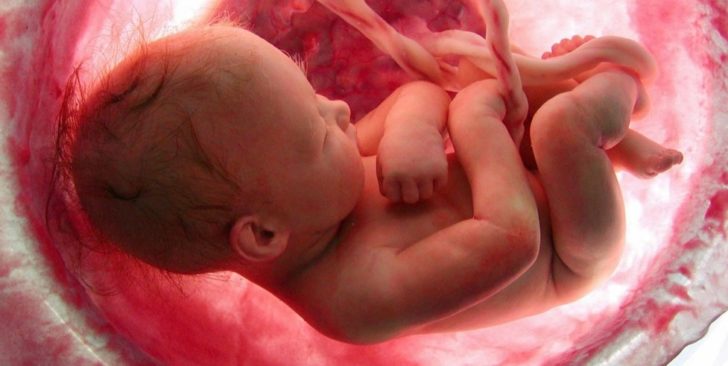Nano-Medicine for the unborn child

A team of Swiss researchers has succeeded in developing a new three-dimensional cell model of the human placental barrier. The "model organ" can quickly and reliably deliver new information on the intake of substances, such as nano-particles, by the placental barrier and on any possible toxic effects for the unborn child. This knowledge can also be used in the future for the development of new approaches to therapy during pregnancy.
During its development, the foetus is extremely susceptible to toxic substances. Even the tiniest doses can cause serious damage. In order to protect the unborn child, one of the tasks of the placenta is to act as a barrier to "filter out" harmful substances, while at the same time providing the foetus with the nutrients it needs. In recent years, however, evidence has increasingly suggested that the placental barrier is not 100% effective and that nano-particles are actually able to penetrate it.
Since the function and structure of the human placenta is unique, studies undertaken on pregnant mammals are problematic and often inconclusive. Traditional models of the human placental barrier are either very time consuming to construct, or are extremely simplified.
Tests of this nature are best carried out on donated placentas that become available after childbirth by Caesarean section. The organs are connected as quickly as possible to a perfusion system and this ensures the tissue is provided with nutrients and oxygen. This model is, indeed, the most accurate, i.e. the most clinically relevant. It is, however, very technically demandingand, moreover,restricted to a perfusion time window of six to eight hours. Against that, such placentas can be used to reliably test the ability of any given nano-particle to penetrate the placental barrier. The model does not, however, yield any information on the mechanism used by the particle to penetrate this complex organ.
Researchers are therefore tending to fall back on the use of simple cell cultures and other modelling systems. An individual cell, possibly taken from the epithelium and subsequently cultivated and propagated in a petri dish, is perfectly suited to a whole range of different experiments. However, researchers cannot be certain that the cells in the petri dish will ultimately behave like those in the human body. The new model that the Empa team under Tina Buerki described in the scientific journal "Nanoscale" at the end of last year is, by contrast, three-dimensional and consists of more than one cell type. The cells exist in a tissue-like environment analogous to the placenta and can be experimented on for a longer period of time.
Experiments can be carried out much more quickly using the 3D model than with the real placenta and, significantly, on the most widely differing types of nano-particle. In this way, those nano-particles that show potentially toxic effects or demonstrate desirable transport behaviour can be efficiently pre-selected and the results verified using a real placenta.
"With these studies, we are hoping to lay the foundations for the safe but nevertheless effective use of nano-medicines during pregnancy", Buerki continued. If we understand the transport mechanisms of nano-materials through the placental barrier well enough, we believe we can develop new carrier systems for therapeutic agents that can be safely given to pregnant women. This is because many women are forced to take medicines even during pregnancy – patients suffering from epilepsy or diabetes, for example, or patients that have contracted life-threatening infections. Nano-carriers must be chosen which are unable to penetrate the placental barrier. It is also possible, for example, to provide such carriers with "address labels", which ensure that the medicine shuttle is transported to the correct organ – i.e. to the diseased organ – and is unable to penetrate the placenta. This would allow the medicine to be released first and foremost into the mother. Consequently, the amounts absorbed by the foetus or embryo - and therefore the risk to the unborn child - are significantly reduced.